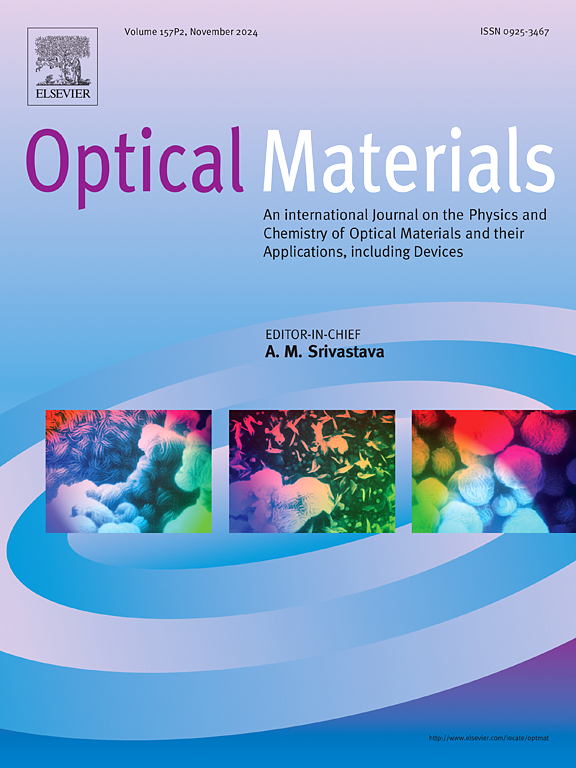Revealing the mechanism of the cooling-process on the performance of liquid crystal physical gels
IF 4.2
3区 材料科学
Q2 MATERIALS SCIENCE, MULTIDISCIPLINARY
引用次数: 0
Abstract
The formation of liquid crystal physical gels (LCPG) involves cooling process in which the gelators form fibers network through intermolecular physical cross-linking. However, the intrinsic correlation between the electro-optical properties of LCPG and cooling rate has rarely been fully discussed. In this report, an LCPG was constructed using 4-Cyano-4′-pentylbiphenyl (5CB) as the liquid crystal and 1,3:2,4-di-O-m,p-dimethylbenzylidene-D-sorbitol (DMDBS) as the gelator to investigate the intrinsic relationship between the cooling process and the performance of LCPG. By quantitative analysis the performance and morphology of LCPG at different cooling rate, it can be observed that a lower cooling rate induces reaction-limited aggregation, which promotes gelator diffusion and yields a denser gel fiber network characterized by smaller pore size and a higher number of pores, for instance, the size and number are 37.61 μm and 330, respectively, in LCPG's POM image at 5 °C/min cooling rate, whereas that of LCPG at 25 °C/min cooling are 89.09 μm and 108. It will reduce the off-state transmittance and promote the improvement of contrast ratio (CR), but bring about increase in driving voltage due to the larger anchoring energy of the network. In addition, we confirmed the better direct-current driveability of LCPG. Our work reveals the factors affecting the cooling kinetics on the performance of LCPG, and provides a new theoretical basis and technical support for the LCPG preparation.

揭示了冷却过程对液晶物理凝胶性能的影响机理
液晶物理凝胶(LCPG)的形成涉及冷却过程,凝胶通过分子间物理交联形成纤维网络。然而,LCPG的电光性质与冷却速率之间的内在相关性很少得到充分的讨论。本文以4-氰基-4′-戊基联苯(5CB)为液晶,1,3:2,4-二- o- m,对二甲基苄基-d -山梨糖醇(DMDBS)为凝胶构建了LCPG,研究了冷却过程与LCPG性能之间的内在关系。的性能和形态定量分析LCPG在不同的冷却速度,可以观察到较低的冷却速率诱发reaction-limited聚合,促进gelator扩散和产生一个密集的凝胶纤维网络的特点是规模较小的孔隙大小和更多的毛孔,例如,大小和数量37.61μm和330年,分别在LCPG POM图像在5°C /分钟冷却速率,而LCPG 25°C /分钟冷却89.09μm, 108。它将降低离态透过率,促进对比度(CR)的提高,但由于网络的锚定能量较大,导致驱动电压升高。此外,我们还证实了LCPG具有更好的直流驾驶性能。揭示了冷却动力学对LCPG性能的影响因素,为LCPG的制备提供了新的理论依据和技术支持。
本文章由计算机程序翻译,如有差异,请以英文原文为准。
求助全文
约1分钟内获得全文
求助全文
来源期刊

Optical Materials
工程技术-材料科学:综合
CiteScore
6.60
自引率
12.80%
发文量
1265
审稿时长
38 days
期刊介绍:
Optical Materials has an open access mirror journal Optical Materials: X, sharing the same aims and scope, editorial team, submission system and rigorous peer review.
The purpose of Optical Materials is to provide a means of communication and technology transfer between researchers who are interested in materials for potential device applications. The journal publishes original papers and review articles on the design, synthesis, characterisation and applications of optical materials.
OPTICAL MATERIALS focuses on:
• Optical Properties of Material Systems;
• The Materials Aspects of Optical Phenomena;
• The Materials Aspects of Devices and Applications.
Authors can submit separate research elements describing their data to Data in Brief and methods to Methods X.
 求助内容:
求助内容: 应助结果提醒方式:
应助结果提醒方式:


